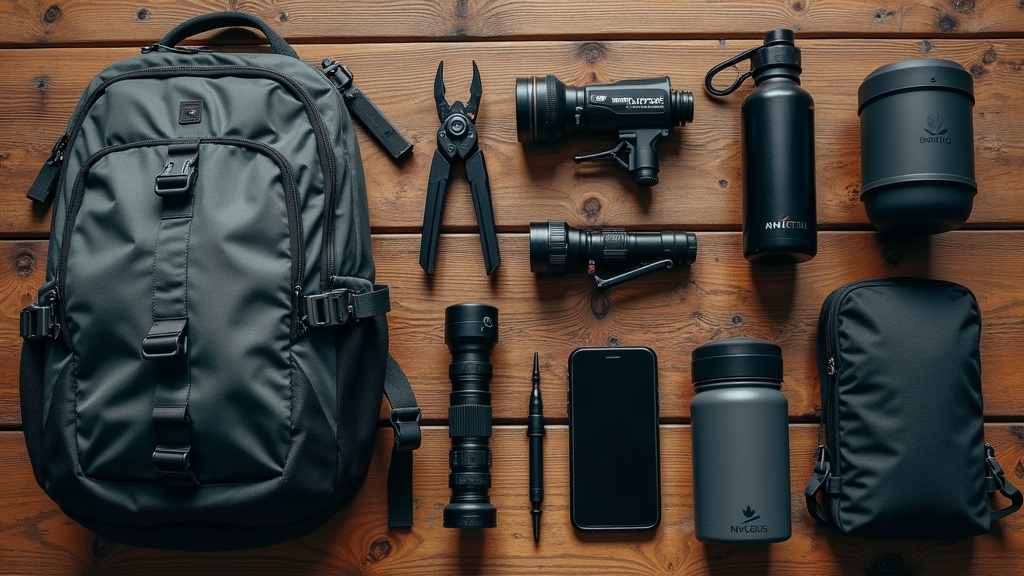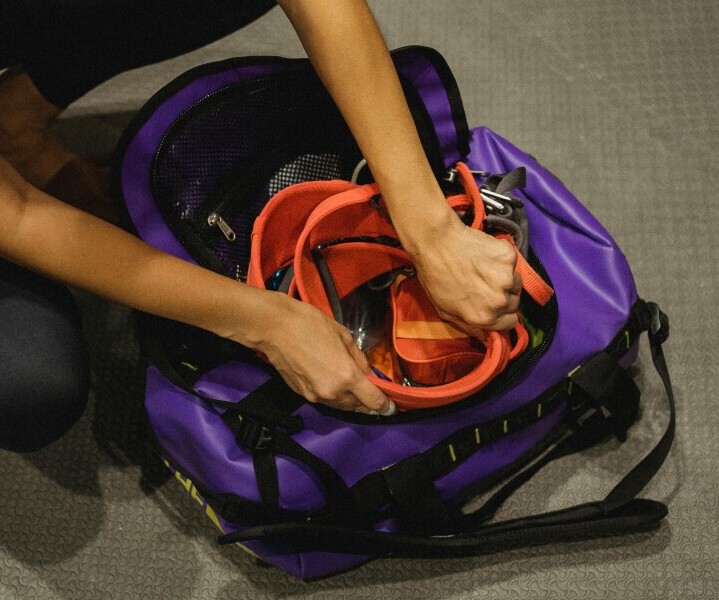If you’ve ever spent hours poring over gear reviews, spec charts, and field tests, you’re not alone. Picking equipment that can actually handle stress, long days, and unexpected moments isn’t just about getting what’s popular. It’s about using stuff you can truly rely on. I’ve gathered my personal gear picks that were built to perform, whether you’re just starting or upgrading your current lineup. Everything here has earned its spot for durability, smart design, and a strong history of not letting me down when things get dicey.

What I Look for in Performance Gear
Getting gear that’s actually ready for real-world use takes more than just looking at fancy branding. Here’s what I pay close attention to before anything lands in my kit:
- Durability: I want gear that feels tough in your hands. Materials like ripstop nylon, titanium, and reinforced plastics go a long way toward surviving drops and scrapes.
- Weather Resistance: Whether it’s a rain-soaked hike or a camping trip with surprise downpours, water and dust resistance is really important. I check for IP ratings and skimp-proof seals so rain or mud won’t be an issue.
- Battery Life (for electronics): If something can’t get through a day, it’s just dead weight. Extended battery life, quick charging, and easy swappability really matter on the road.
- Versatility: I lean toward multiuse items because pack space is always at a premium. If a product can do more than one thing well, it’s worth checking out since it lightens the overall load.
- Weight and Comfort: If I’m carrying it for hours, it shouldn’t be a drag. Lightweight designs and a good ergonomic feel make the cut for anything in my regular rotation.
Of course, I also like checking trusted user reviews, and when I stumble upon a piece of gear praised by seasoned hikers or outdoor experts, I pay extra attention. Over time, certain brands and individual products stand out as true workhorses in the field.
Everyday Adventure: My Top Gear Picks
No kit is complete without a few sturdy essentials. These are some of the items that make pretty much every trip or outing less stressful, especially when the unexpected pops up. If you’re new to venturing outdoors or upgrading old equipment, these basics are a great place to start:
- Rugged Backpack: Right now, I’m hooked on the Patagonia Black Hole 32L. This thing has heavyduty zippers, weatherproof fabric, and just the right amount of pockets. It’s coped with weeks of daily use, long travel, and a few accidental tumbles with zero fuss.
- Water Bottle That Lasts: I swear by my Nalgene Wide Mouth. Tried smashing it in more ways than I care to admit, but it never cracks. It’s lightweight, fits most filters, and easy to clean. These little details matter when moving fast or camping out.
- Multitool: The Leatherman Wave+ has slid into my setup and never left. Whether I’m fixing a bike trailside, pulling out splinters, or opening food cans at the campfire, this is my goto. Blades hold their edge, and it never feels flimsy when working on bigger tasks.
- Technical Flashlight: My Surefire G2X Pro balances brightness, long battery life, and bombproof construction. It’s survived drops, heavy rain, and plenty of dirt without missing a beat or dimming when I needed it most.
When you check out these essentials, think about how they fit in your own trips—sometimes a simple improvement like upgrading a flashlight or getting a more comfortable backpack can make your adventure that much smoother.

Specialized Tech for When You Need More
Sometimes, a hike turns into a real navigation test, or a city run turns up unexpected weather challenges. Here are a few tech gadgets I bring when things might veer into rough territory, adding extra convenience and peace of mind:
- Rugged Smartphone: For navigation and communication offgrid, the Cat S62 Pro has impressed me. Waterproof, dropproof, long battery life, and a solid GPS signal even in thick forests. The built-in FLIR thermal camera has actually helped me spot wildlife at dusk and find heat leaks in tents, which came in useful during a chilly fall trip.
- Portable Power Bank: The Anker PowerCore 20100 keeps my essentials running for days. I’ve recharged a phone several times on a multiday trek. It’s a bit heavier than some options, but pays for itself with solid reliability and no surprise power outages.
- Satellite Messenger: I rely on the Garmin inReach Mini 2 for backcountry trips. It lets me check in with family, get weather updates, and send an SOS no matter where I am. The peace of mind is huge and it doesn’t take up much space in your pack.
You don’t need all this tech for every outing, but if you find yourself heading off the grid, or want an extra layer of safety, these are solid additions.
Packing Smart: Making Gear Work for You
Anyone who’s ever packed for an adventure knows how important it is to keep weight down without leaving essentials behind. The best method I’ve found starts with a straightforward checklist:
- Start With the Base: Prioritize items you really can’t go without. Weather shell, hydration, navigation, cell phone, and multitool always go first for me.
- Adapt for The Trip: Add extra pieces based on season, terrain, and activity. Think headlamp for night walks or a compact camp stove if you’re away for meals. Cold weather trips may require insulated layers, while summer hikes might go lighter.
- Pack Redundancy Carefully: I’m all for a backup light or extra smartphone battery, but I avoid duplicate heavy items like two multitools. Choose items that serve more than one purpose when you can. It makes every ounce work harder.
- Compression Saves Space: Stuff sacks and packing cubes help keep gear tidy and accessible. Plus you’ll fit more into the same space and make it much easier to grab the right item when you need it.
Getting everything to fit is satisfying, but knowing you packed with intention makes a much bigger difference when you’re out there. I tweak my packing strategy each season and jot notes about what I didn’t use, making it easier to travel lighter next time.
Common Problems with Gear and How to Handle Them
Even the best tools and supplies can have their off days. Here are some recurring problems I’ve come across, and how I work around them without letting an annoyance ruin the whole trip:
- Zippers That Stick: A little silicone lubricant or candle wax often gets snaggy zippers back in shape. I also clean out dust or small debris before treks, especially if gear’s been stashed away for a while. Prevention beats field repairs every time.
- Batteries Fading in the Cold: Cold drains lithium batteries way faster. I keep spare packs close to my body or wrap them in a sock to slow power loss when temps get low. For longer trips, planning out battery swaps helps a ton.
- Unexpected Leaks: I’ve had supposedly waterproof bags fail after a surprise storm. I seal important electronics in drybags or sturdy ziptop freezer bags as a backup—it’s a simple trick that saves stress when weather turns.
- Strap Failures: Buckles or shoulder straps sometimes give out at the worst time. Using a little duct tape or a spare carabiner can patch things up just enough to finish the day and get you home safely.
Quick Fixes Worth Carrying
Aside from standard kit, I always squeeze in a tiny roll of duct tape, extra zip ties, and a few safety pins. They’re handy fixes for anything from patching up jackets to making emergency repairs on small gear parts. A little repair kit often comes in clutch whether you’re deep in the woods or dealing with a snagged backpack strap on your commute.
Real World Uses: How My Picks Have Paid Off
It’s easy to read specs but way more useful to see how gear holds up in action. Here are some times my picks really shined and saved me from sticky situations:
- Mountain Storms: The Surefire flashlight pulled me through a whiteout hike when my headlamp died. Reliability in those conditions means less stress and less chance of getting stuck out all night. A good flashlight meant I made it back to camp in one piece.
- Unexpected Urban Blackout: My power bank kept everyone’s phones charged so we had constant access to apps, maps, and updates when the power grid went down for a day. It turned into a mini lifeline for my friends and me during that unexpected outage.
- Remote Camping: The inReach Mini made it easy to get weather updates and check in with family outside cell service. That kind of connectivity isn’t flashy, but it matters more than almost anything else in the field, especially when the nearest help is miles away.
FAQ: Built to Perform Gear Guide
Answering a few common questions about tough gear choices can help avoid headaches for anyone still building their own setup. Here are the most frequent ones:
Question: How do I pick gear that won’t break the bank?
Answer: Not everything has to be top-shelf. I focus on items where failure would matter most—like weatherproof outerwear, reliable lights, or a good power bank. There’s always a budget model that’s proven by lots of user reviews if you research carefully. Consider buying off-season for better deals too.
Question: How should I maintain gear so it lasts?
Answer: Regular cleanouts, checking for rips, cleaning zippers, and charging electronics every couple months makes a huge difference in longevity. Don’t store gear damp or dirty if you want it to last for years. It only takes a few minutes but adds years to your favorite items.
Question: What’s a quick way to spot quality when shopping?
Answer: I look up forum reviews, check product warranties, and scan for repair tips. If a piece of gear comes with easy-to-find spare parts and detailed repair guides online, it’s usually built to last. Also, gear that has been around for a while and still gets talked about is a safe bet.
Final Takeaways for Building Your Own Setup
Tough, reliable gear might take extra time to track down, but running into fewer surprises when it really counts is worth the effort. Over time, picking up a few hard-tested favorites makes every trip and every challenge a bit easier and a lot more fun. I keep refining my lineup based on what works in the wild, not just what looks good online. That’s the best way to make sure your gear is built to perform wherever you go. Whether you’re upgrading for the season or just starting out, building a kit you can count on means more enjoyable adventures and far less stress. If you’re not sure where to start, look for time-tested reviews, buy what fits your needs, and don’t worry about having the latest model—what matters most is that it works when you need it. Feel free to comment and will get back to you 🙂
